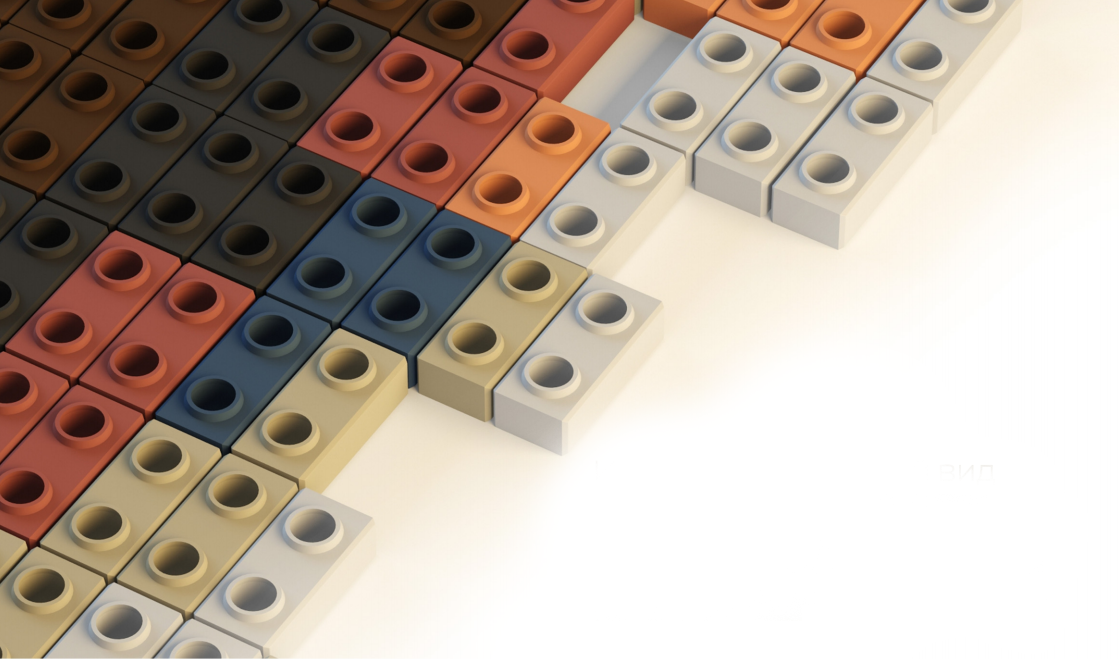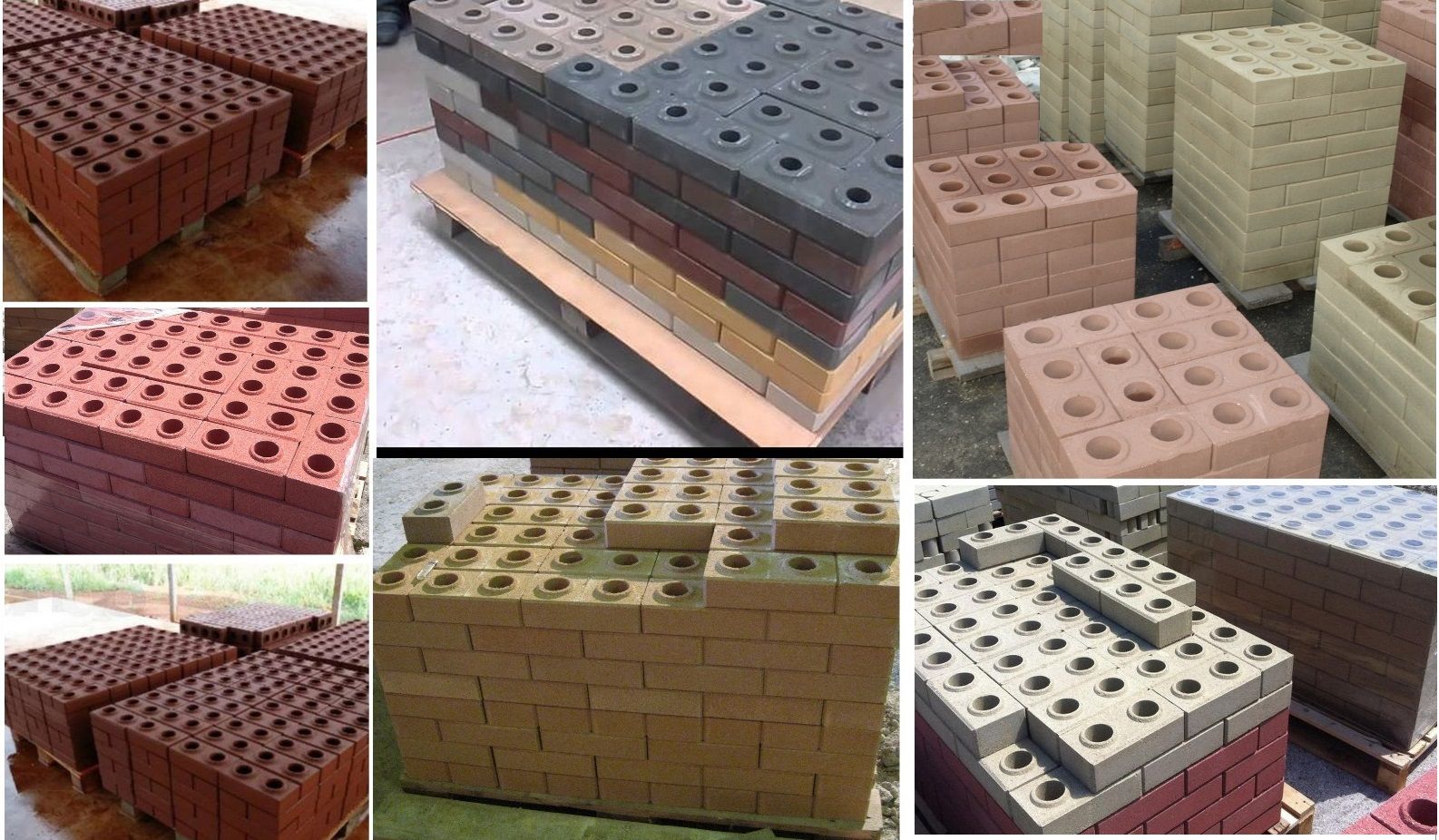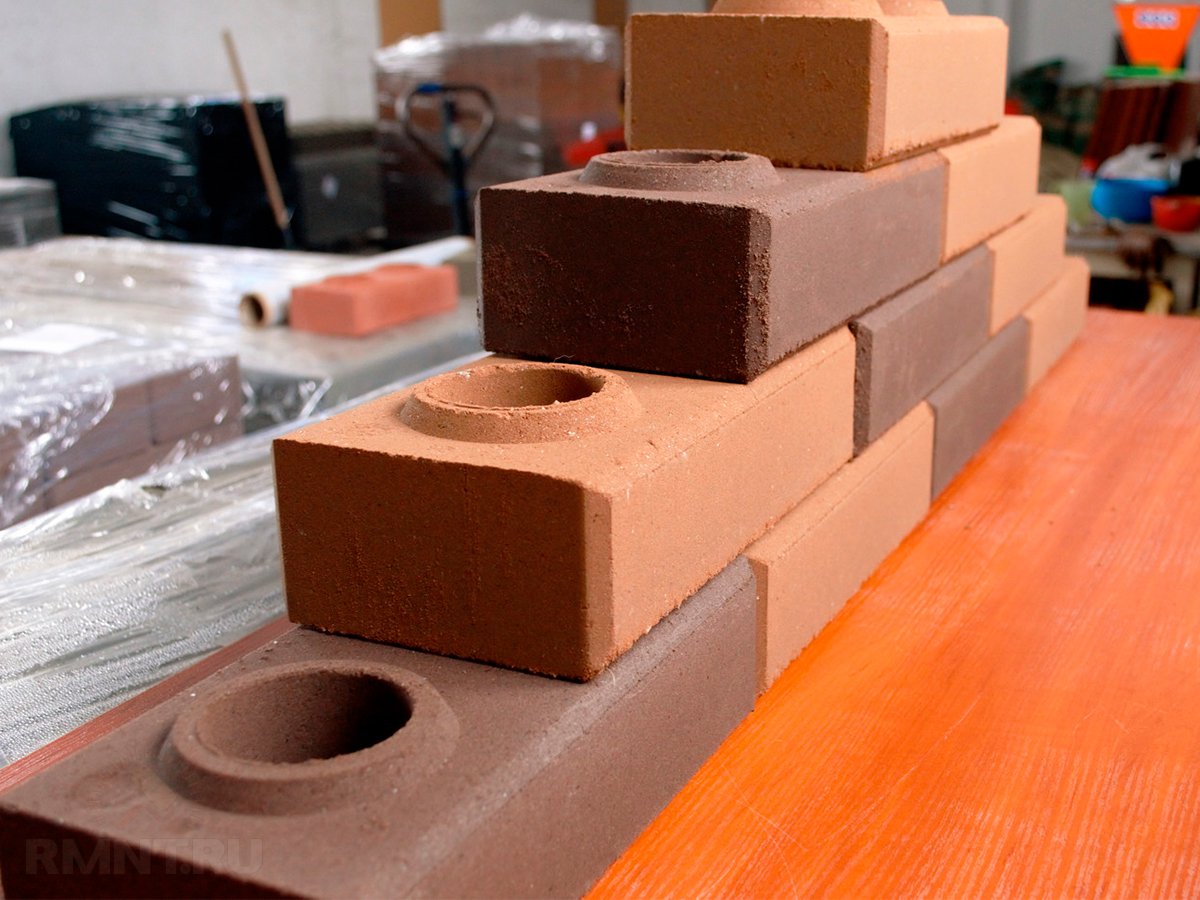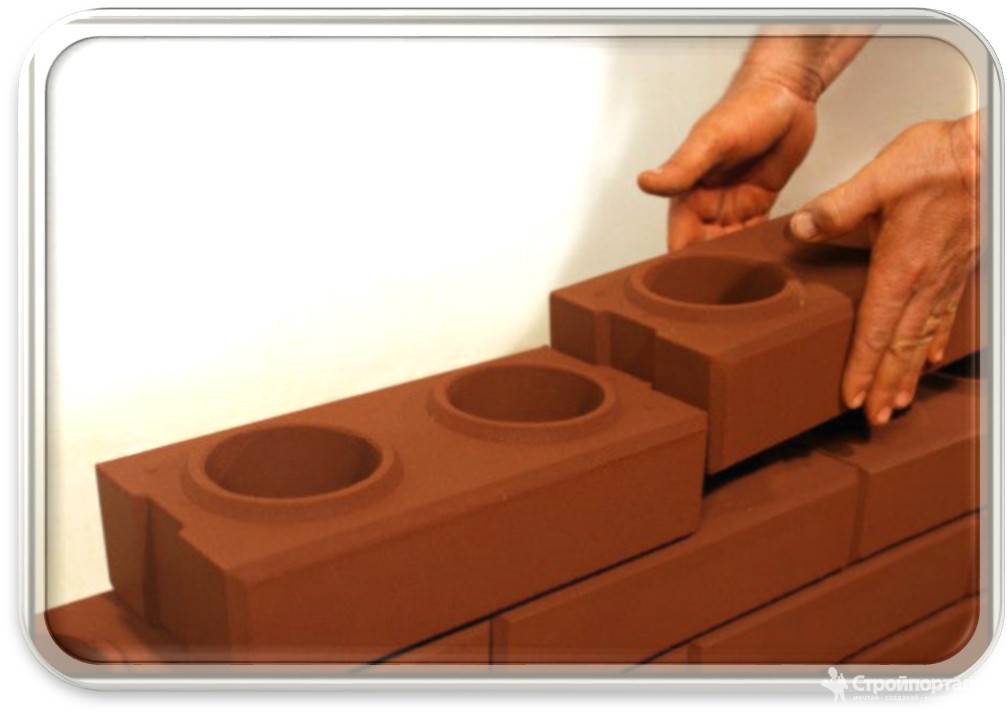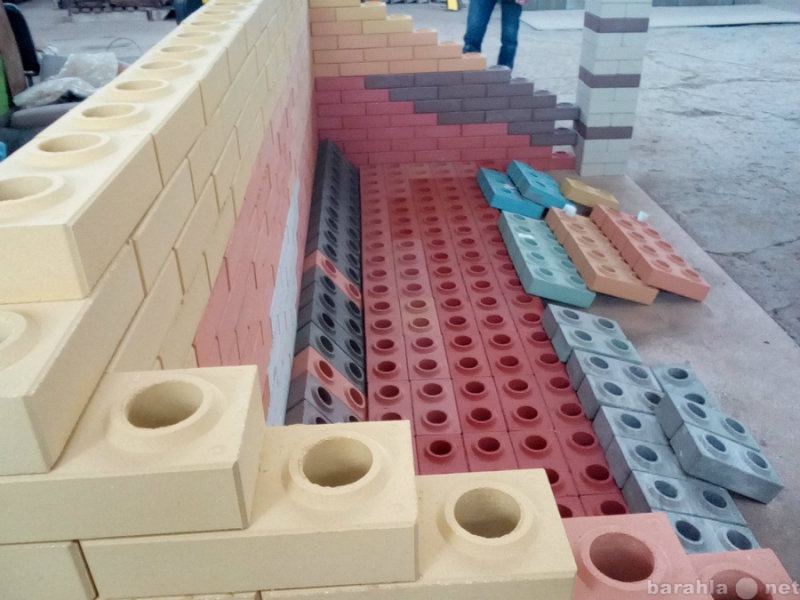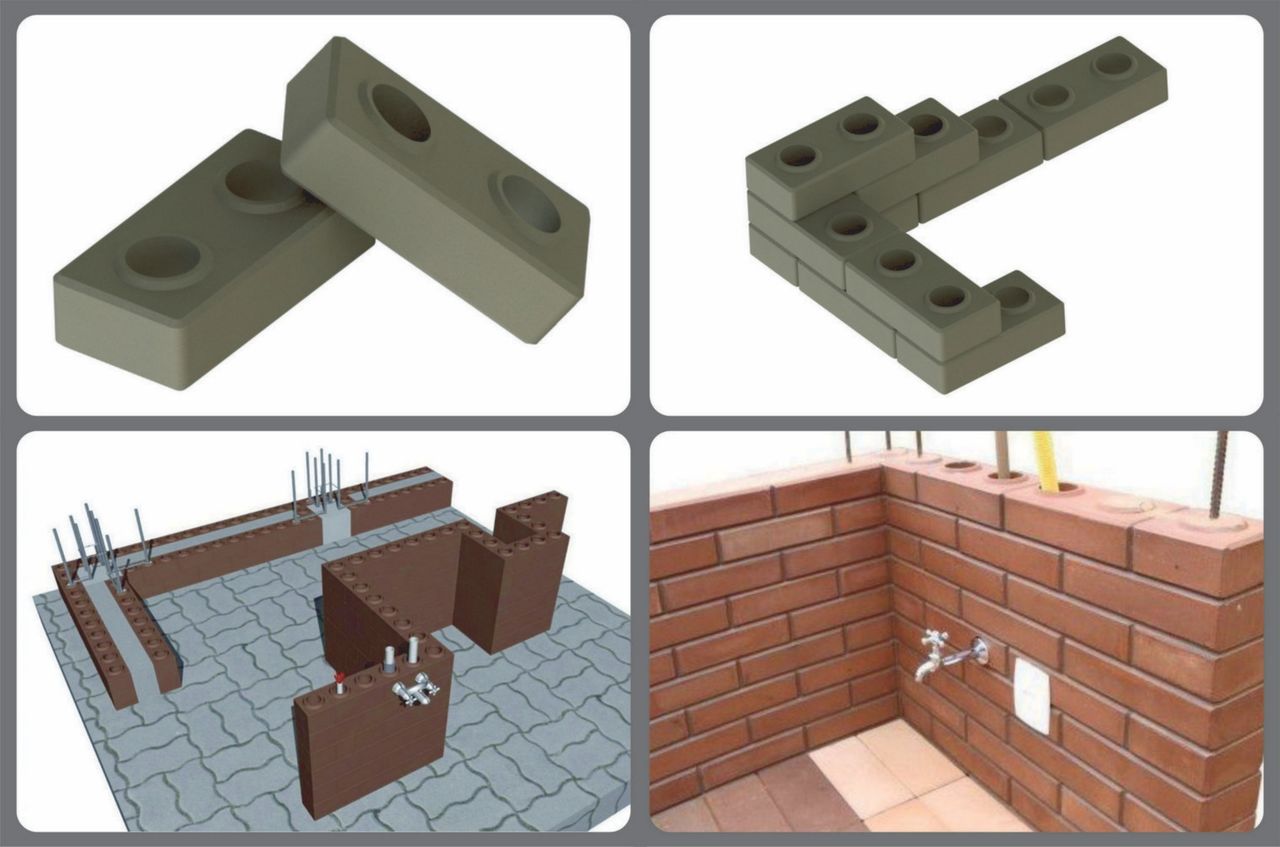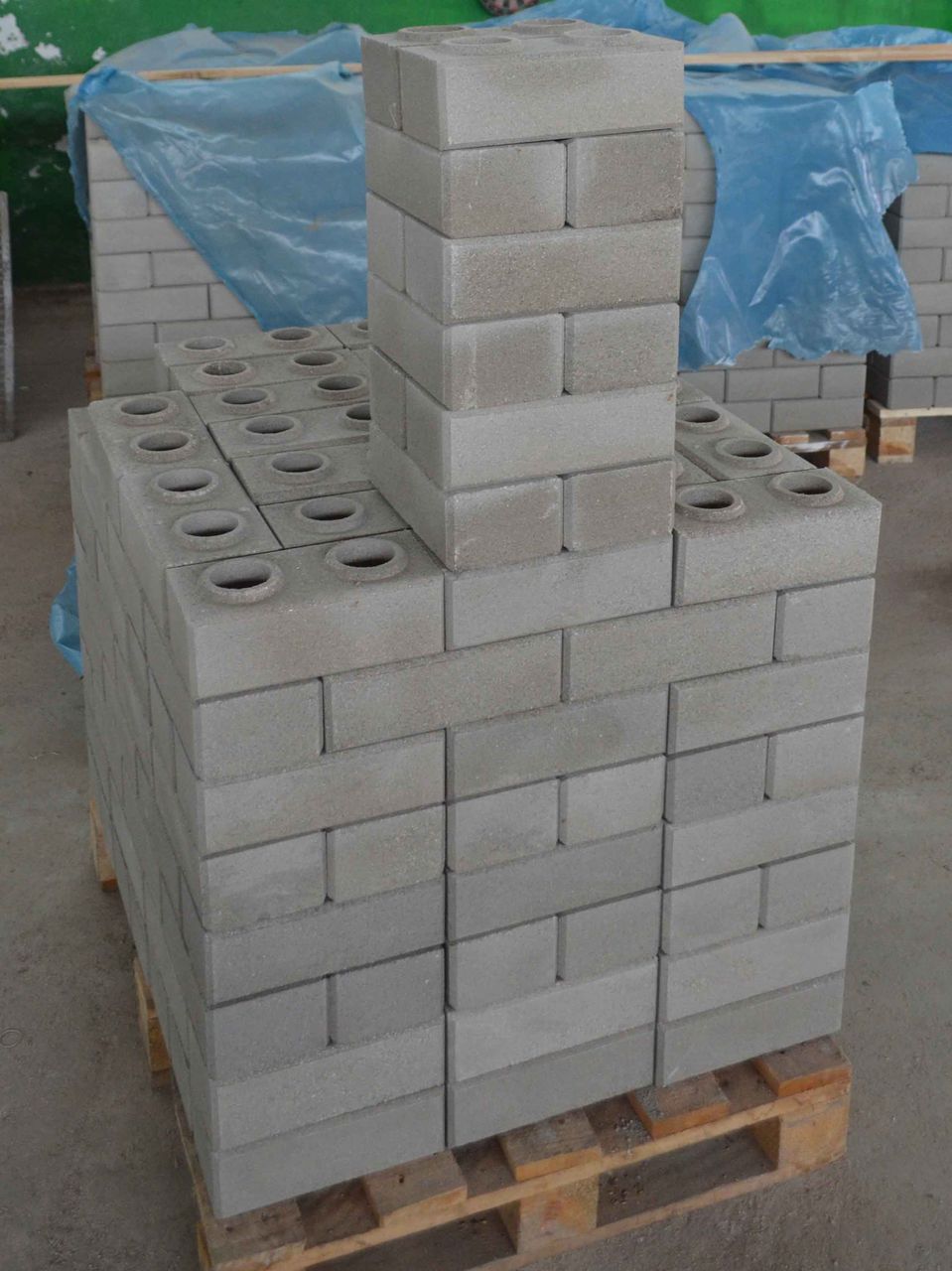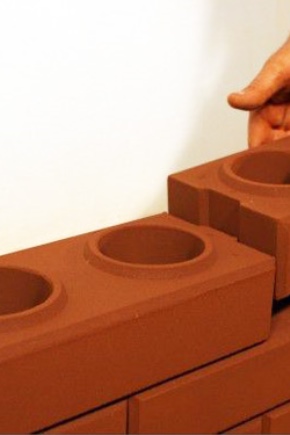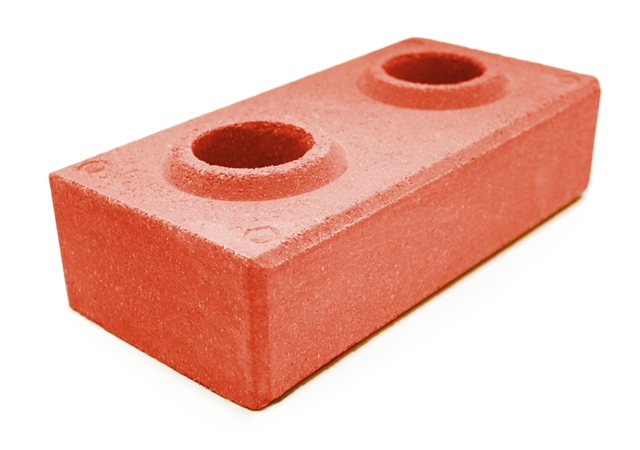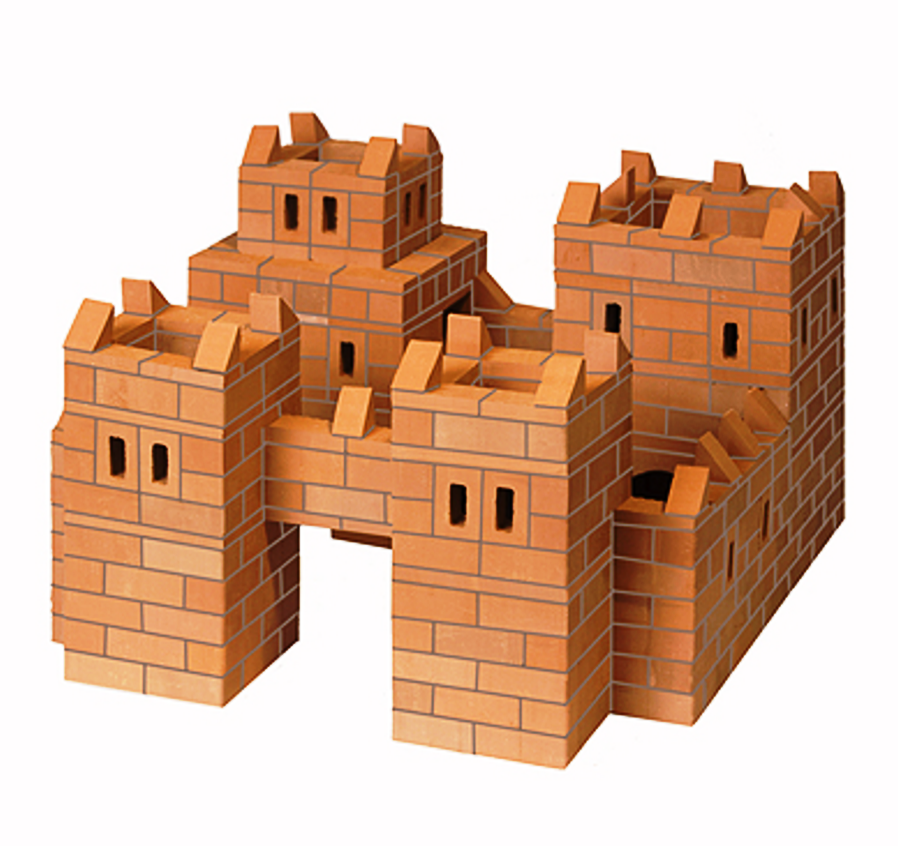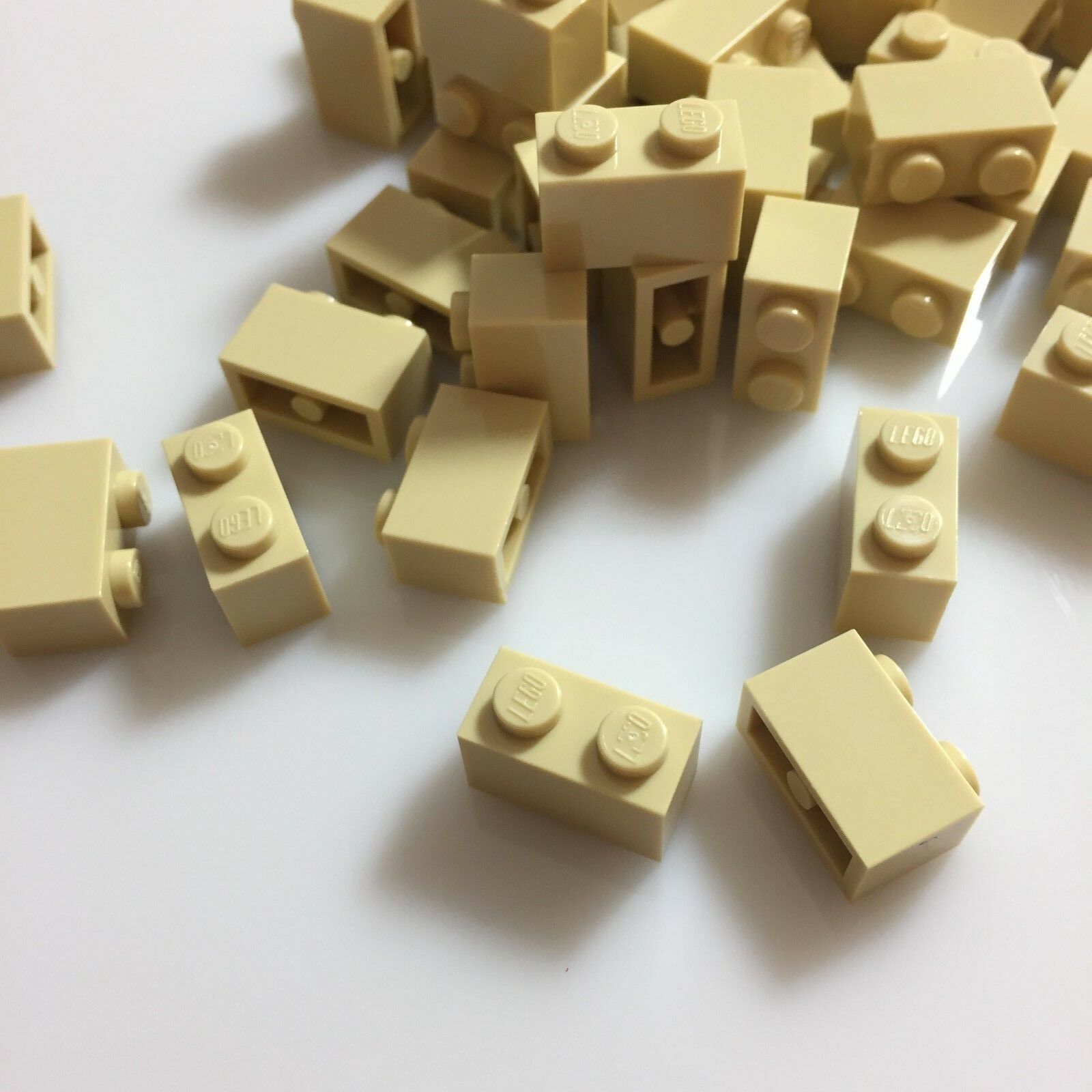Lego brick versus classic masonry
There are many enemies of this technology on the Internet who leave negative stories about the use of Lego bricks. But looking closely, it becomes clear that all their disadvantages do not carry the truth and have nothing to do with practice. All this is written by professionals, dissatisfied with the fall in demand for their services.
- With a similar strength, the mass of Lego bricks is lower and the cost of lifting the brick to the masonry site will be less and the building itself will also be lighter. All this will have a positive effect on the total cost of the entire project.
- The water absorption of Lego bricks is quite low compared to conventional bricks. Therefore, their service life will be much longer. Especially in places of unstable climate.
In the rest of the parameters, everything is quite the same and there are no special comments on the use of Lego bricks. Also, such a brick has one big plus - it can be made directly at the construction site. This will reduce shipping costs.
Lego brick machine price and performance
- Low productivity machines are about 1000 pcs. per shift, these include manual and electric with low power, the price for them starts from 78,000 and up to 300,000 rubles.
- Medium category machines produce about 2,000 pieces in one working day, the cost is from 350 thousand rubles.
- Industrial machines and mini-factories can produce 750 bricks in one hour, but the price will also be high - over 2 million rubles.
 For small volumes, a small machine with a weight of 750 kg is suitable. Its dimensions are: height - 2 m, width - 1 m, length - 1.5 m. As you can see, it will need a small room, 9 sq.m. is enough. But if you buy more powerful equipment, then you will need additional space.
For small volumes, a small machine with a weight of 750 kg is suitable. Its dimensions are: height - 2 m, width - 1 m, length - 1.5 m. As you can see, it will need a small room, 9 sq.m. is enough. But if you buy more powerful equipment, then you will need additional space.
When buying a machine, pay attention to how many work cycles it can withstand: for a manual machine it is 500,000 cycles, and for an electric one the value will vary from 600,000 to a million. The next parameter is the amount of time it takes to make one brick, the average is 15-30 seconds, it also matters how many bricks can be obtained at a time, usually from one to 6-8 pieces
This increases productivity and the cost of the machine will pay off faster.
The next parameter is the amount of time it takes to make one brick, the average is 15-30 seconds, it also matters how many bricks can be obtained at a time, usually from one to 6-8 pieces. This increases productivity and the cost of the machine will pay off faster.
A lot of pressure is required to obtain a stronger brick. Some machines only exert a pressure of two tons, for the construction of some buildings this may not be enough. In order to obtain a brick suitable for the laying of load-bearing walls, a pressure of 30 tons is required.
Peculiarities
- The benefits are visible even to non-professionals. Due to the presence of grooves, laying them is faster and easier. The existing holes can be used for wiring. The weight of Lego bricks is less than that of other types.
- Making Lego bricks does not require firing, which greatly reduces the cost. Instead of firing, strong pressing is used, which gives strength. It has not only different colors and shades of colors, but also a variety of textures.
- Thanks to hyper-pressing, this brick can be classified as a type of artificial stone. It can be successfully used for cladding a building. And high strength allows you to lay out not only partitions, but also load-bearing walls.
- Laying does not require special skills, it is enough to lay out the first layer correctly, and then the process will go quickly enough. Indeed, due to the existing grooves and spikes, they fit together perfectly. The adhesion of the layers does not take place with a traditional solution, but with the use of a special glue, which can be applied with a brush or roller. The use of glue will not only reduce costs, but also does not require a lot of physical activity as when preparing a cement mortar. And the wall will look aesthetically pleasing.
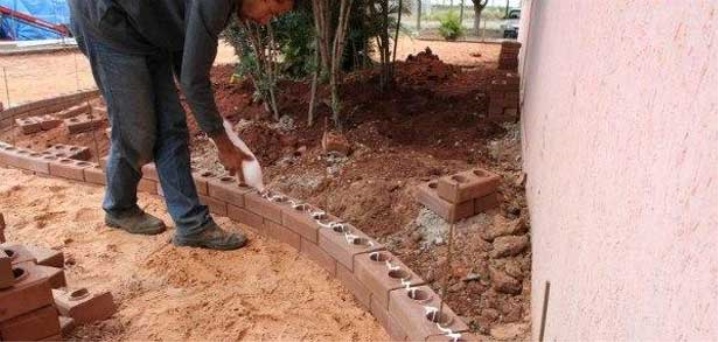
One cube contains 500 bricks. To assemble 1 cube of Lego bricks, you need 15 kg. tile adhesive for outdoor use.
Types of Lego bricks are discussed in our other article.
Brick production technology "Lego"
The manufacturing process of this product includes several stages. Namely, carrying out:
- preparatory work;
- molding;
- pressing bricks;
- storage of finished products with appropriate exposure for a certain time.
Next, we will consider each stage in more detail. Preparatory work includes the delivery of the required raw materials, the implementation of its sorting and preparation of the required mixture for molding. To increase productivity, it is recommended to use additional equipment that will allow the components to be brought to the required fraction (if necessary) by sieving and mixing raw materials additives. In the presence of large volumes, the finished mixture is fed to the equipment receiving hopper using a conveyor. Then the dispensing device sends the required volume of the substance into the matrix for formation. This is done automatically with the help of an operator. After that, the batcher returns to the sub-hopper space. Then, the valve is opened, which supplies oil to the press. After that, the mixture is compressed for a certain time. Then, with the help of a pusher, the finished brick is moved out and transferred to a temporary warehouse site, where the resulting products must be kept for three days. After that, the products can be shipped to the consumer. The period of time before the start of application of the product must be at least 21 days.
Features of production
The key to the quality and strength of the brick is strict adherence to the recipe in the process of preparing the working mixture. It is on its composition that the technical and operational parameters of the finished product will depend.
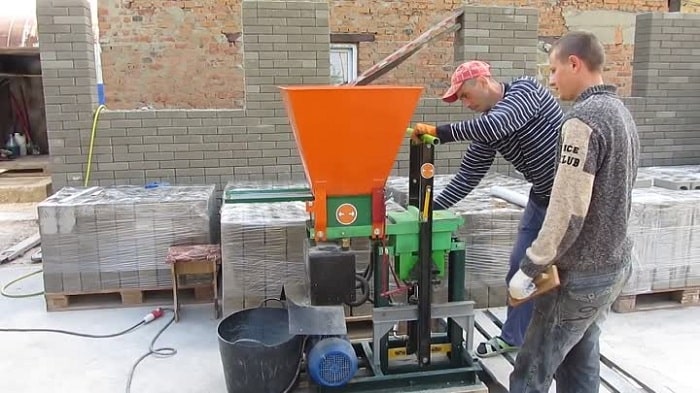
After mixing the working mixture, they proceed to the molding of the products. The resulting viscous mass is placed in special forms, where the final formation of the brick takes place with the help of a press.
The technology for the production of Lego bricks provides for the use of both manual and electric machines. The advantages of the first type of equipment include simplicity of design and the possibility of autonomous operation, however, the performance of electric machines is 2 - 3 times higher than that of mechanical counterparts.
As for the profitability of production, the following can be noted: manual machines with a mechanical drive and one die can produce 600 - 700 units of products in 8 - 10 hours. The use of semi-automatic installations will make it possible to produce about 2000 bricks per shift. The productivity of the fully automated complex is about 10,000 items per shift.
Lego brick making equipment - price
For the production of Lego bricks for commercial purposes or to meet the need for this type of building material, you will need to purchase the appropriate equipment. Production machines can be divided into two types: manual and electric. The former do not require additional costs from the owners, however, they differ in less productivity.
Machines, the productivity of which is not very high (production of about 1 thousand pieces during a shift), can be purchased for 78-300 thousand rubles. If we talk about medium-power machines (about 2 thousand pieces during a working day), then they can be purchased for 350 thousand rubles. The equipment, which can be classified as a mini-factory or industrial-grade machine tools, is capable of producing about 750 bricks in one hour. The cost of such devices is more than 2 million rubles.
To organize the production of small volumes, you will need a machine weighing 750 kg.Thus, when creating your own Lego brick production, it is worth choosing a suitable room. The dimensions of a low-performance machine are: width - 1 m, height - 2 m, and length - 1.5 m. To ensure the operation of one such machine, there will be a sufficiently small area. At the same time, when buying more productive equipment, you should initially worry about providing free space. The same applies to business. Over time, the premises will have to be expanded to accommodate new machines.
Advice
When buying a Lego brick making machine, pay attention to the number of working cycles that it can withstand without the need for repairs. Manual ones usually withstand about 500 thousand cycles, while electric ones are more durable in this respect - about 0.6-1 million cycles
An important parameter is the amount of time that needs to be spent on the production of one brick. On average, this will take 15-30 seconds.
In addition, it is important to estimate how many bricks can be produced in one cycle. The more the machine can produce at a time, the faster the cost of its acquisition will pay off.
The strength of the brick depends on the pressure applied during its creation. Some of the machines develop an indicator of 2 tons, which is completely insufficient for the construction of a number of buildings. To get a brick that can be used in the laying of load-bearing walls, you need to create a pressure of about 30 tons or more.
Today, Russian manufacturers have been able to take their place in the segment of the production of machines for Lego bricks, displacing almost all importers of similar equipment. This is a rather rare case, as it is often cheaper to order a supply of equipment for small businesses from China. Some large companies are used, as a rule, to create large batches within a short period of time. Swiss steel is usually used for production. All products of foreign suppliers can be evaluated remotely, since they often leave reviews, which highlight both positive and negative aspects. One thing is invariable - their cost is several times higher than domestically produced machines.
Operating principle
In this case, certain actions are taken into account. The mixture prepared for the formation of bricks is poured into a specially adapted hopper. Then, with the help of a dispenser, it enters the molding compartment. Further, the mixture is compressed with a hydraulic press under high pressure. The result is a ready-made "Lego" brick. Equipment, reviews of which are positive due to the simplicity of the workflow, as mentioned above, is considered on the example of the Legostanok machine. It has a three-phase electric motor and an oil pump, which creates the necessary pressure in the hydraulic cylinder. Thanks to the mechanized compression action, this machine achieves high pressures and increases the productivity of the process. Its presence will allow you to make Lego bricks with your own hands, even without special skills and experience.
Lego brick production technology
Lego brick production technology includes several stages. The dry mixture is fed into a special hopper. By means of a batcher, a strictly set volume of the mixture is directed into a special chamber, which will become the basis for a new brick. A matrix is installed in the chamber, on which the number of bricks created after pressure treatment depends. In general, the design may vary depending on the manufacturer.
During high pressure treatment, the mixture is "baked" with water and cement. This method is called "cold welding". After opening the press, the platform with the products installed on it moves up.The worker gets the opportunity to use the finished brick, as well as place it immediately on a pallet to ensure further steaming or drying. The resulting Lego brick must be left for several days in a warehouse for it to gain strength. The drying time depends both on the type of machine and on the composition of the mixture, dimensions of the product.
In addition, to organize a high-performance mini-factory, you will need a mixer to reduce the cost of producing Lego bricks. In the case of buying a ready-made mixture, the consumable part is significantly higher than with its own production. The mixer must have strong blades, and their number must be at least 4. In addition, you will need a transport tape through which the mixture will be delivered to the hopper. Initially, you can reduce costs by manually loading, but this requires a lot of work.
Advice. most of the machines require a small number of maintenance personnel. In many cases, only one person can handle the entire job. To increase productivity, you will need to involve two or three workers. One can be put to work with the machine, the rest to control the supply of the mixture, filling the hopper, etc.
It is worth getting pallets in advance for placing lots of Lego bricks. To fill up the raw materials, you will need shovels that are resistant to abrasives. When grinding the coating and particles entering the mixer, a technological problem may arise, due to which defects in the brick will appear due to changes in the chemical composition. Special brushes are useful for cleaning equipment between production runs.
Lego bricks: the composition of the mixture
In this regard, there are several varieties. Lego bricks can be made from the following compositions:
- Clay-cement. It uses components such as clay (90%), cement (8%) and water.
- Composition based on different screenings. This also includes screenings (85-90%), cement (8%) and water.
- Clay-sandy. This includes four components: sand (35%), clay (55%), cement (8%) and water.
When planning production, consideration should be given to the availability of raw materials. This is an important condition. Bricks, which are obtained by pressing, require raw materials with a fine fraction. This must be taken into account in order to achieve the required strength. Lego bricks obtained from screenings have the highest strength characteristics.
The content of a large amount of sand in the product contributes to the deterioration of the strength indicator due to the fact that large sand fractions are present.
The production of products such as Lego bricks, reviews of which indicate their reliability and efficiency, requires special forming dies. With their help, a surface with the required smoothness and with certain parameters of the specified geometric dimensions is created. For the full-fledged production of this product, you should have the entire set of matrices that allow you to obtain halves of these bricks and fitting products. They are used for finishing works.
How to make a Lego brick at home
Since the technology for the manufacture of building material is not particularly difficult, it is possible to organize the production of Lego bricks at home, for example, in a garage or a shed.
When starting to make bricks at home, you need to have a clear idea of the volume of future production. If you plan to make bricks exclusively for personal use, a manual machine installed in any utility room is sufficient. When it comes to the subsequent marketing of products, it is advisable to use more efficient equipment.
Production stages
The technology for making Lego bricks in domestic conditions is not much different from the industrial one and includes the following stages:
Procurement and cleaning of ingredients (sand, cement, mineral screening, plasticizers, pigments, etc.).
Preparation of dry working mixture
At this stage, it is important to strictly adhere to the recipe: the mass fraction of cement included in the mixture should be at least 8-10%, this will ensure the necessary mechanical strength of the products.
Stirring the resulting mixture with the addition of 4-5% water. A hand or electric mixer can be used to effectively mix the ingredients.
Block forming.
Steaming bricks.
Subject to the dosage, the use of quality materials and the conscientious performance of work, the quality of homemade bricks is quite comparable to industrial products. Home-made blocks can be used not only for the construction of partitions, but also for laying load-bearing walls.
Applications
Lego bricks are widely used in all areas of residential and industrial construction. Depending on the recipe for the mixture, it can be used for various purposes: laying, sidewalk or earthquake resistant. The high strength of the masonry allows residential, industrial buildings and special facilities to withstand earthquakes, landslides, blast waves, and other natural and man-made threats.
The strength, frost resistance and low permeability of Lego bricks practically does not limit its use in construction.
It can be used to build high-rise buildings, dry and wet rooms, fences, gazebos, utility blocks, and can also be used as a building or facing material. It is ideal for building or decorating walls, forming a basement and basement floors, laying columns, fences and fences. It will look spectacular when finishing near-window areas, doorways, fireplaces, corners and eaves of buildings.
Lego bricks are also widely used as a decorative element in landscape design when decorating flower beds and alleys.
Lego brick production technology
In order to understand how the process of making bricks takes place, it is necessary to consider what parts the machine consists of:
- hopper for dry mix;
- dispenser;
- brick forming chamber;
- the chamber contains a matrix that determines the future shape and dimensions of the product;
- an electric motor, it is absent in hand-held machines;
- oil pump and hydraulic press;
- the frame of the entire unit.
The design may differ from each manufacturer, only the main components of the machine are indicated. The whole process consists in the fact that the loaded mixture is subjected to high pressure treatment, while the filler is, as it were, sintered with cement and water, this method is called "cold welding".
Is it possible to do it yourself
Before you start making Lego bricks with your own hands, you should carefully calculate the economics of the project. If a small amount of material is required for construction work, it is better to purchase it from reliable suppliers. It is possible to purchase special equipment and allocate a site for the storage of components and finished material only in case of stable and constant demand.
To obtain a quality product, you will need the following materials:
- sand at the rate of 1:10;
- dropout rate 1:70;
- Portland cement M500 at the rate of 1:20.
About 285 finished products are obtained from one ton of raw materials. The cost of materials, electricity, the level of transportation costs and the salary of workers depend on the place of equipment of the mini-plant, and can differ significantly from city to city.
For the production of Lego products, you can pick up any equipment - from small hand-held devices, which can produce up to 800 pieces per working day, to powerful mini-factories with a high productivity of 10,000 items.The cost of molding presses varies from 45,000 rubles to several million.
Lego brick - mix composition
To make a Lego brick, you need to understand that the proportion of filler in the composition of the mixture reaches 80-92% of its total mass. For this role, screenings from crushed limestone are most often selected. For the binding part, cement or Portland cement is used, the mass fraction of which is set at 8-10%. In addition, pigment elements will be required to change the color of the brick. As a rule, products are produced in black, yellow, brown, and also red.
Advice. It is worth noting that there are no ideal recipes for Lego bricks, however, as part of the instructions for the machine, you can find several recipes that are recommended by the manufacturer specifically for a particular machine model.
The use of plasticizers is not mandatory, however, Lego bricks that are made using it are distinguished by higher density and strength. In addition, the structure becomes more uniform and the surface smoother.
How to work with Lego bricks?
One of the main advantages of working with a product such as a Lego brick is its ease of installation. Compared to the "classic" analogue, installation will not cause any difficulties. Possessing a special shape and having two guide holes, the Lego brick is laid quite simply:
- It will be sufficient to carry out the installation of only the first row using a level and guides. There is no difficulty in this either. Further, the rest of all the rows themselves are aligned during the laying process, thanks to the corresponding guides.
- A minimum amount of glue is required for installation. Lego bricks fit perfectly together. As a result, no more than 25 kilograms of glue is used for 500 pieces.
- Even an inexperienced master will be able to carry out the perfect dressing of the seams, since the installation of Lego bricks along the guides completely eliminates the presence of traditional mistakes. At the same time, the laying speed is 2-3 times higher than that of a conventional analogue.
With low water absorption and high density, Lego bricks are not afraid of dirt. If excess glue leaves the seam, it can be easily removed after complete drying with a spatula.
Since the masonry, during the construction of which Lego bricks are used, has through holes along the entire height, it is very convenient to carry out reinforcement. If it is planned to erect low structures (for example, fence elements), then installation can be carried out without glue or mortar at all. Lego bricks are laid out “on dry”, and then reinforcement having a diameter of 10-20 mm is inserted into the holes of the masonry and filled with cement. As a result, the strength of the masonry increases, as well as the stability and reliability of the wall geometry. It must be borne in mind that the filling should be carried out in stages, that is, no more than 6 rows in 1 run.
It is convenient to use holes for laying utility lines. The presence of cavities in the walls great for this. Then you can fill the holes with concrete.
Currently, Lego bricks are considered as a new generation material. They are still treated with interest and vigilance. But more and more often "Lego" (brick) reviews of builders are receiving a positive character due to the quality of the material and ease of installation, as well as favorable prices, practicality and impeccable appearance. And these are pretty weighty arguments.
10 mystical places in the world where it is forbidden to step on the foot of a person There are certain directions where access is restricted or simply prohibited for people. Be it a beautiful cave or a mysterious island inhabited by huge ones.
Fashion for Naked: the best images of the stars. We select a Naked cosmetic bag for your make-up It's nice when fashion pushes us not only to experiment, but also to accept ourselves and our beauty.Fashionable positive attitude to your own body.
Toxicosis: causes, consequences, treatment The assumption that nausea worries a woman only in the morning is incorrect. It can last all day, but is most pronounced in the morning. It comes from.
What does the shape of your nose say about your personality? Many experts believe that looking at the nose can tell a lot about a person's personality.
Therefore, when you first meet, pay attention to the nose of the unfamiliar
Our ancestors slept differently from us. What are we doing wrong? It's hard to believe, but scientists and many historians are inclined to believe that modern man sleeps differently from his ancient ancestors. Initially.
20 photos of cats taken at the right moment Cats are amazing creatures, and, perhaps, everyone knows about this. They are also incredibly photogenic and always know how to be at the right time in the rules.
Advantages and disadvantages
In addition to ease of use, Lego-type products have a number of positive properties:
- low material cost;
- the possibility of placing a system of communication wires inside the masonry without the use of gating;
- due to the inclusion of dyes in the composition of Lego bricks, it is possible to obtain a wide variety of colors of the material;
- a house made of Lego bricks does not have to be finished - a smooth front surface and the absence of the need to perform jointing implies getting perfectly flat facades;
- the weight of the product is noticeably lower than the standard material, and therefore, when erecting low-rise buildings and structures, simpler and cheaper types of foundation can be used;
- due to its external data, this material is excellent for finishing already built buildings, for erecting decorative brick elements, fences and laying out the framing of fireplaces and stoves.
The negative aspects include the relative novelty of this material in the domestic market and the lack of statistical data on the actual durability and operation of the product under load.
In addition, there are currently no trade marks on the building materials market that could confirm the high quality of such products and craftsmen have to build objects based on the assurances of the owners of small factories.
Application area
According to the technical characteristics provided by manufacturers, this material can be used for the construction of load-bearing walls, single fences and used as a finishing material for wall cladding.
Due to the increased strength of the masonry, exceeding the usual brickwork in this characteristic, buildings and structures made of the material in question cope perfectly with the seismic load.
Specifications
The technical indicators of Lego products are comparable to those of ordinary hollow bricks, therefore, when considering the issue of the durability of the product, the durability of red bricks, which ranges from 30 to 50 years, can be taken into account. Specifications:
Specifications:
- Frost resistance: from 200 cycles.
- Moisture resistance: the material absorbs no more than 6% moisture, which makes it possible to erect objects from it in areas with high air humidity.
- Density: 1550 kg / m3.
- Thermal conductivity: 0.45 W / (m * K).
- Strength: M100 – M200 (the material is intended for the construction of multi-storey buildings and structures).
- Weight: 3 kg.
- Lego brick sizes: 250 * 125 * 65 or 300 * 150 * 100.
- Colors: in the preparation of raw materials for the production of Lego bricks, dyes are used, as a result, products of various colors are obtained, from light beige and red, to gray and dark blue.
If we compare an ordinary hollow brick and a Lego product, it will be found that their strength and frost resistance are identical, the density of a standard brick is slightly higher, and water absorption is almost three times greater, while Lego is 30% lighter.
The disadvantages include the poor thermal conductivity of Lego products, compared to ordinary bricks, but this issue is solved by using insulation in the backing.
To form a mixture for the production of bricks, the following components are used:
- limestone screening;
- cement mortar as a binder;
- water;
- dyes.
The instructions attached to the equipment will help to correctly calculate the proportions of each ingredient. The production process consists of forming bricks by high pressure pressing. The strength of the product depends on the pressure level and the size of the fractions of the bulk material.



